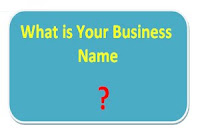Selecting a business name is an important step in the establishment of your new business.
The name you choose will become the identity of your business by:
- Creating an image for the business
- Informing customers of the nature of your business
- Helping customers recall your business
- Giving your business respectability
- Differentiating your business from all others
Think carefully about what your business name says about your business. Consider the differing impacts of the following:
AVL Designs or AVL fashion
Grace Creation or Handbag & Things
John Smith graphic designs or Funky Graphic
Eden gardening designs or Garden of Eden
Anastasia Jewelery Designs or Ladies must have
Here are 5 ways of how you can select a business name for your new business:
- David Jones
- McDonalds
- Harvey Norman
As with brandable business names, a problem with using a person’s name is that it is not immediately apparent what products and services your company offers.
2. Descriptive business names
Generic, descriptive names make it easy for your potential customers to work out what product or service your business offers.
Examples of descriptive business names:
- International Business Machines (IBM)
- Australia and New Zealand Banking Group (ANZ)
- Kentucky Fried Chicken (now KFC)
3. Combination business names
- Ford Motor Company (Henry Ford)
- Dell Computers (Michael Dell)
- Dunlop Tires (John Dunlop)
4. The “Brand” business names
- Amazon
- Microsoft






